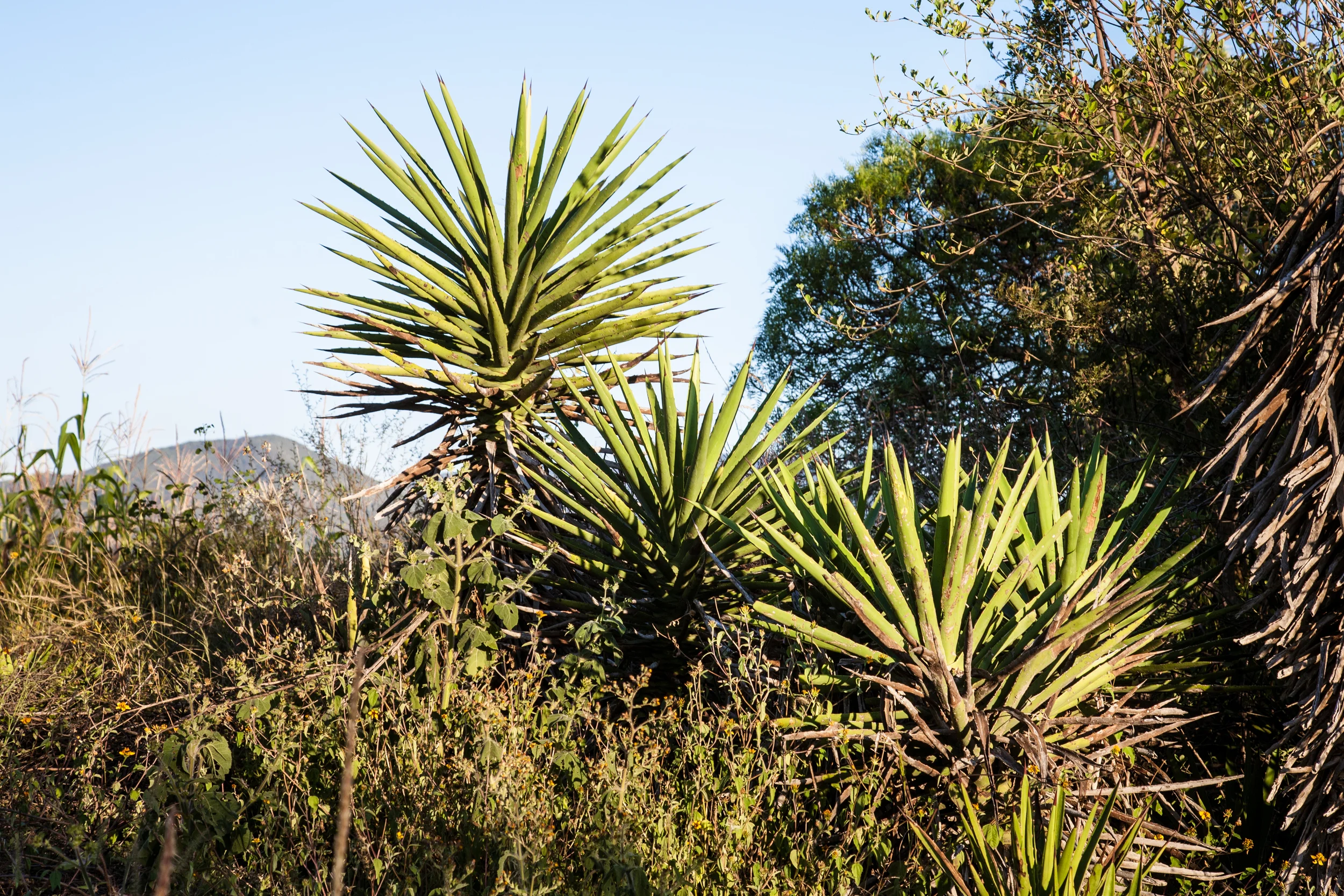Cobre y Barro
This unique batch of mezcal was made by master mezcalero Aquilino García Lopez in the town of Candelaria Yegolé, Oaxaca. The three types of agave used are 50% Espadín, 25% Tepeztate and 25% Cuixe. The agave was roasted in an earthen pit for two and half days, ground with a stone wheel, fermented for 8 days in open wooden vats and twice distilled in a 250 Liter copper pot still. The mezcal was then rested for 31 days in antique clay cántaros. The entire 101 liter batch was purchsed by our dear friends at The Pastry War in Houston, Texas.
A 45-minute walk up-river from Yegolé is the remote town of Guicha. Here, in the late 1800s Aquilino’s great grandfather Antonio Garcia was famous for his mezcal, which was always made by blending agaves Espadín, Tepeztate and Cuixe. Aquilino recreated his great grandfathers recipe and the results were delightful, but we wanted to take it one step further in our quest to understand what mezcal would have tasted like in that dusty Oaxacan town 150 years ago. So, we decided to age the mezcal in 100-year-old clay cántaros that had been used to store mezcal by various generations of our family.
Before plastic, and before glass, clay was the only material available and therefore always used for mezcal storage. The clay is not sealed and being so porous, we imagined it would significantly affect the flavor. No one had touched these cántaros for probably 40 years, so we rigorously cleaned them with sand, water and then 150 proof mezcal. Finally we impregnated them with potable water for a week so the clay would not soak up too much of the mezcal.
Originally we planned to age the mezcal for two months, an arbitrary amount of time. What we found was that very quickly the mezcal transformed, it seemed to obtain a perfect flavor balance at 31 days and so we bottled it then. The changes were quite interesting. Where when aging mezcal in glass, the flavors seem to separate and distinguish themselves, in clay they seemed to stew together. A bit came off the nose, especially the bouquet of the Tepeztate that had been the most prominent part. The finish really came together and the mouth feel became much more luxurious.
We believe the final product to be exquisite, but most importantly, to be an accurate representation of what the mezcals of the 1800s tasted like in this corner of Oaxaca. Dust off a bottle and drink it in.
A very special thanks to The Pastry War, our very first account











